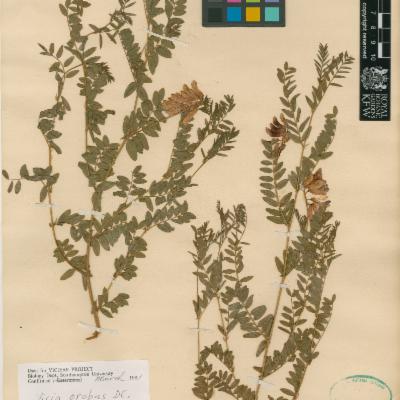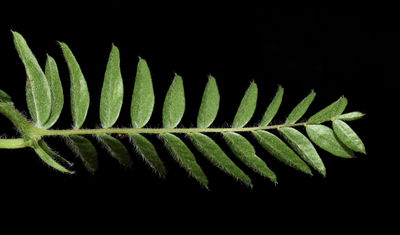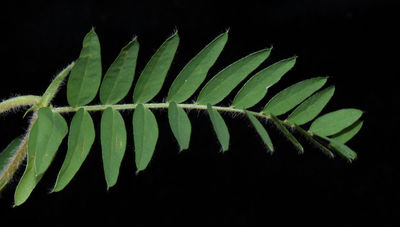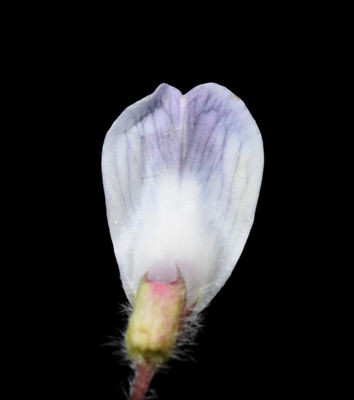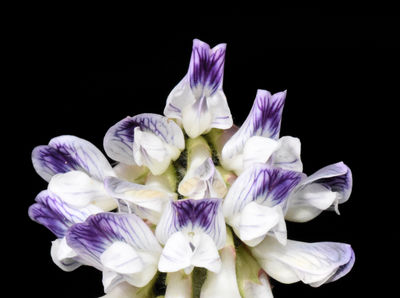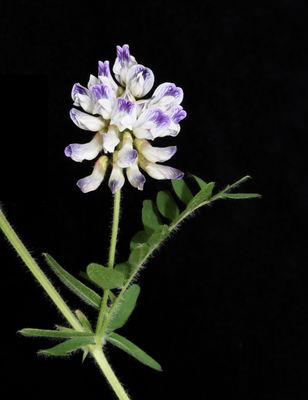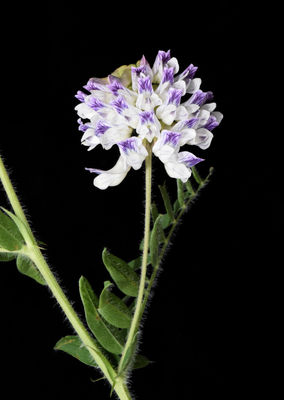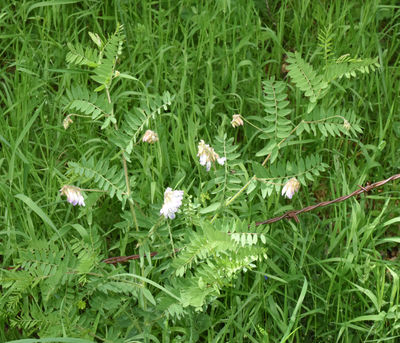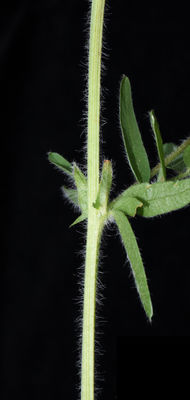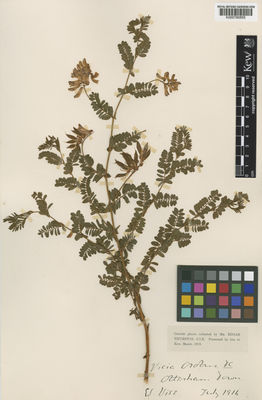Geography and distribution
Found in Western Europe, from northern Spain to Norway, wood bitter-vetch occurs at up to 2,380 metres above sea level. A significant proportion of the world's population occurs in Great Britain and Ireland, where it is primarily an upland species usually found between 200-300 metres above sea level, reaching 430 metres in Afton Glen, but descending to sea-level north of Lochinver.
In Great Britain it grows in association with a wide range of species including Alchemilla glabra , Carex pallescens , Genista anglica , Pseudorchis albida , Rhinanthus minor , Stachys officinalis and Viola lutea , in scattered localities throughout western England, Wales and Scotland. It is local and declining in central, west and north Ireland.
A favourite habitat in Great Britain is the stony edges of small enclosed fields of unimproved grassland from which sheep are excluded in summer to allow a hay crop to grow.
Description
Vicia orobus is a hairless, long-lived perennial herb with slender, winged, erect stems. It grows to a height of 60 cm and has pinnate leaves, ending in a minute point instead of a tendril.
It flowers in early to mid-summer, from May to July. The inflorescence is short and rounded with a long stalk, and bears 6-20 flowers. The flowers are lilac-white with lilac or purple veins, and are 12-15 mm in diameter.
Pollination is normally performed by bees. The fruit is a hairless, yellowish-brown, pointed pod 20-30 mm long.
It is closely allied to Vicia cassubica L., which replaces it from central France eastwards.
Threats and conservation
Vicia orobus suffers under both overgrazing and undergrazing, as well as grassland improvement (fertilisation, re-seeding etc.) and land reclamation.
In Ireland, Vicia orobus is thought to be threatened by habitat loss, and is being protected by the National Botanic Gardens of Ireland through the Irish Threatened Plant Species Conservation Programme. It has been assessed as a species that could become endangered by 2050 due to climate change. In Wales, the Local Biodiversity Action Plan for Lowland Meadows in Powys, is also trying to conserve the species.
Conservation assessments carried out by Kew
Vicia orobus is being monitored as part of the 'IUCN Sampled Red List Index for Plants', which aims to produce conservation assessments for a representative sample of the world's plant species. This information will then be used to monitor trends in extinction risk and help focus conservation efforts where they are needed most.
Uses
None known, although other vetches have many uses, for example as forage crops. Vetches also play an important ecological role by fixing nitrogen and hence enhancing soil fertility, and are therefore economically important and used as 'green manure'. In parts of Asia and the Mediterranean the seeds of some Vicia species are eaten much like lentils. Vetches are particularly attractive to certain insects, such as Lycaenid butterflies or 'blues'.
Millennium Seed Bank: Seed storage
Kew's Millennium Seed Bank Partnership aims to save plant life world wide, focusing on plants under threat and those of most use in the future. Seeds are dried, packaged and stored at a sub-zero temperature in our seed bank vault.
Description of seeds: Average 1,000 seed weight = 25 g
Number of seed collections stored in the Millennium Seed Bank: One
Seed storage behaviour: Orthodox (the seeds of this plant survive drying without significant reduction in their viability, and are therefore amenable to long-term frozen storage such as at the MSB)
Cultivation
In general, vetches can be cultivated successfully under a wide range of conditions, and are well-adapted for growth in poor soils. Vicia orobus is no exception, being very easy to grow, coping well with drier conditions and needing only some support, such as brushwood stakes, to grow through in the spring. Vicia orobus germinates readily from seed.
This species at Kew
Wood bitter-vetch can be seen growing in the Plant Family Beds at Kew Gardens.



